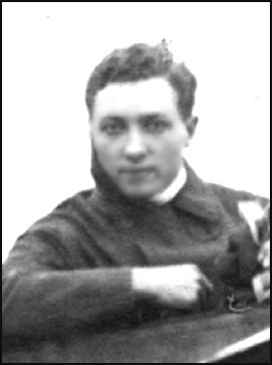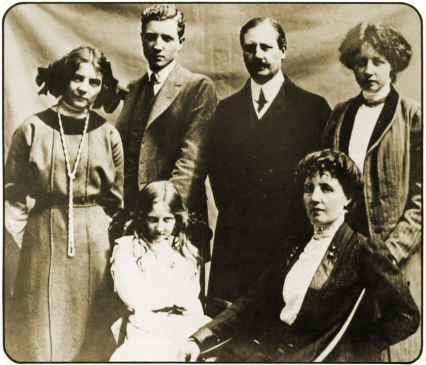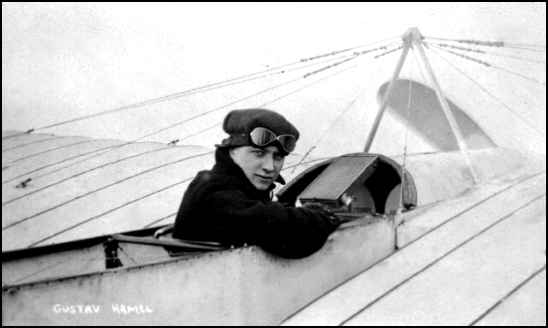
 |
|
Photo Courtesy of Roy Nagl |
 |
|
Taken approx. 1910, perhaps to commemorate their attainment of British citizenship (March 1910). Standing L-R: Dora Hamel (aged approx. seventeen - she later preferred to be called Dolly, but Gustav knew her as Dora; she married in the 1920s, had one child, and died in 1976); Gustav himself (aged approx. twenty); their father, Dr. G. W. Hamel (qualified in Berne, Switzerland in 1888 and moved to London in the late 1890s, he died suddenly in 1922, aged sixty); and Magda Hamel (aged approx. nineteen - she also became a doctor, later moved to Ireland and died in 1966). Sitting: Anna Hamel (aged approx. ten - she later married twice, and died in 1983, her grandson is Michael Hamel-Green); and their mother, Caroline Hamel (the formidable 'Ma' who lived to be ninety-five; she died in London in 1960, having outlived her son by almost half a century). Photograph and information kindly reproduced/donated by Catherine Evans and Michael Hamel-Green. |
 |
|
Photo Courtesy of Roy Nagl, 12-23-05 |
 |
|
Photo Courtesy of David J. Barnes from his Family History and Post card Collecting website. |
|
Further reportage appears in the history of Hendon Airfield at Bradford, Yorkshire. As he was the first
to fly from there on Friday, August 1st, 1913[iii] Late in 1913, looping the loop was perfected and became a popular event during the many public displays. On January 2nd 1914, Hamel took Miss Trehawke Davis aloft to experience a loop, and she thus became the first woman in the world to do so. In March 1914 Hamel flew to Cardiff to give a public flying display. While there he met Charles Horace Watkins who was an engineer perfecting his own aircraft called the Robin Gôch, or Red Robin, Contemporary newspaper reports indicate that a few minutes after they met, Hamel flew them both to Watkins' hanger where they inspected the Robin Gôch. [iv] In these early days flying was a dangerous endeavour, accidents and deaths were common, and Hamel never reached 30. He disappeared over the channel on 23rd May 1914 while returning from Paris in a new 80hp Morane-Saulnier monoplane he had just collected. At this time of high international tension, there was speculation that he might have been the victim of sabotage, but no trace was ever found and the story faded with his memory. Gustav's contribution to flying however did not end entirely with his death, a postscript was the posthumous publication of a seminal co-authored book on flying.[v] [i] David Oliver. Hendon Aerodrome -A History-. Airlife Publishing Ltd. 1994 [ii] http://www.hinckley-times.co.uk/htm/history/1910.htm [iii] http://yorkshirepride.portland.co.uk/hedon/page1.shtml [iv] Information supplied by Richard Davies, Curator of Modern and Contemporary Industry at the National Museums & Galleries of Wales. The museum has a Robin Gôch In storage. [v] Flying; some practical experiences Gustav Hamel and Charles C. Turner, London, New York [etc.] Longmans, Green and Co., 1914. xii, 341 p |


|